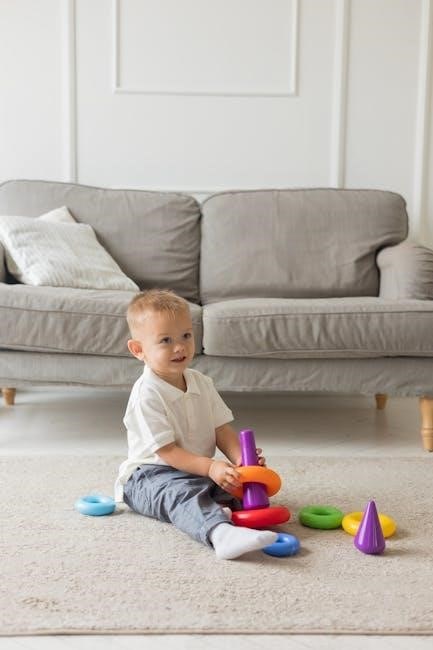Miralax clean out pediatrics is a treatment for constipation, using a bowel clean out program, designed by healthcare teams, to provide the highest levels of care to patients and communities, with a pediatric gastroenterology specialist.
Overview of the Treatment
The treatment involves a bowel clean out program, which is designed to help children with constipation. The program typically includes a combination of Miralax and other medications, as well as dietary changes and lifestyle modifications. According to the information available, the treatment is usually overseen by a pediatric gastroenterology specialist, who will adjust the dose and treatment plan based on the child’s age and response to the treatment. The goal of the treatment is to help the child have regular, mushy stools, and to prevent future episodes of constipation. The treatment program may also include the use of a pediatric fleets enema, which is given once daily on the first two days of the clean out. The Miralax is usually mixed with water or juice, and the child is encouraged to drink as many glasses as possible, with a minimum of four glasses per day. The treatment program is designed to be safe and effective, and to provide long-term relief from constipation. The healthcare team will work with the child and their family to develop a personalized treatment plan, and to provide ongoing support and guidance throughout the treatment process.
Preparation for the Clean Out
Preparation involves explaining the process to the child, and gathering necessary supplies, including Miralax and fluids, to ensure a smooth and effective clean out process for pediatric patients.
Instructions for the Clean Out Process
The clean out process typically involves administering a pediatric fleets enema once daily on days 1 and 2, and having the child drink multiple glasses of Miralax, with at least 4 glasses per day. The Miralax is mixed with 8 ounces of clear fluid, such as an electrolyte solution, and given by 1 capful from the bottle. It is essential to follow the instructions provided by the healthcare team to ensure the clean out process is effective and safe for the child. The child should be encouraged to drink as many glasses of Miralax as possible to help soften and remove stool from the bowel. The healthcare team may also provide additional guidance on how to manage any discomfort or pain the child may experience during the clean out process. By following the instructions carefully, parents can help their child complete the clean out process successfully and improve their bowel health. The clean out process is usually done under the guidance of a pediatric gastroenterology specialist who can adjust the dose and provide support as needed.
Maintenance Therapy for Constipation
Miralax is continued for at least 1 month, with a dose adjusted to have 1-2 regular stools daily, using a pediatric approach.
Long-Term Use of Miralax
The long-term use of Miralax in pediatric patients requires careful consideration and monitoring by a healthcare professional. According to the treatment plan, Miralax can be continued for 6-12 months, with the goal of achieving 1-2 regular mushy stools per day. A pediatric gastroenterology specialist may adjust the dose based on the child’s age and response to treatment. It is essential to follow the recommended dosage and administration instructions to minimize potential side effects. The treatment plan may also involve periodic assessments to evaluate the child’s progress and adjust the treatment as needed. By using Miralax as directed, pediatric patients can experience relief from constipation and improve their overall digestive health. A healthcare professional can provide guidance on the long-term use of Miralax and help determine the best course of treatment for each individual child. With proper use and monitoring, Miralax can be an effective treatment option for pediatric constipation. Regular follow-up appointments with a healthcare professional are crucial to ensure the safe and effective use of Miralax in pediatric patients.
Potential Side Effects of the Clean Out
Pediatric patients undergoing a bowel clean out with Miralax may experience potential side effects, including stomach pain or cramping. This discomfort can be a sign that the child needs to have a bowel movement, and it should subside once the stool is passed. A warm bath may help alleviate the discomfort. Other possible side effects may include nausea, vomiting, or diarrhea. It is essential for parents or caregivers to monitor their child’s condition and report any concerns to their healthcare provider. In some cases, the clean out process may cause an electrolyte imbalance, which can be managed with proper hydration and electrolyte replacement. A healthcare professional can provide guidance on managing potential side effects and ensure the child’s safety during the clean out process. By being aware of the potential side effects, parents and caregivers can take steps to minimize their child’s discomfort and support their overall well-being during the treatment. Regular communication with a healthcare provider is crucial to address any concerns or issues that may arise during the clean out process.
Importance of Following the Treatment Plan
Following the treatment plan for Miralax clean out pediatrics is crucial for the success of the treatment. A healthcare provider will design a personalized treatment plan, taking into account the child’s age, weight, and medical history. It is essential to adhere to the recommended dosage and administration schedule to ensure the effective removal of stool and prevent complications. Deviating from the treatment plan can lead to incomplete clean out, prolonged constipation, or even worsening of symptoms. Parents or caregivers should closely monitor their child’s progress and report any concerns or issues to their healthcare provider. By following the treatment plan, families can help their child achieve a successful clean out and improve their overall bowel health. Regular follow-up appointments with a healthcare provider will also help to assess the child’s progress and make any necessary adjustments to the treatment plan. This collaborative approach will help to ensure the best possible outcome for the child and support their long-term health and well-being. A consistent and committed approach to the treatment plan is vital for achieving a successful outcome.


